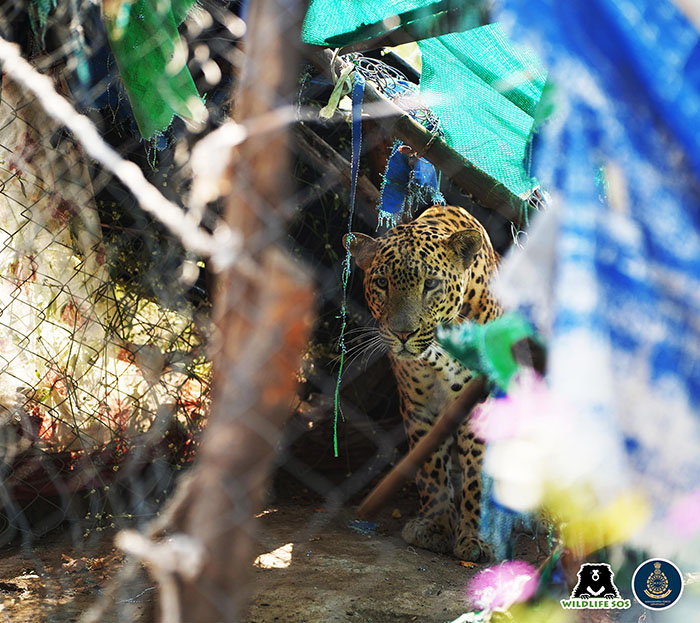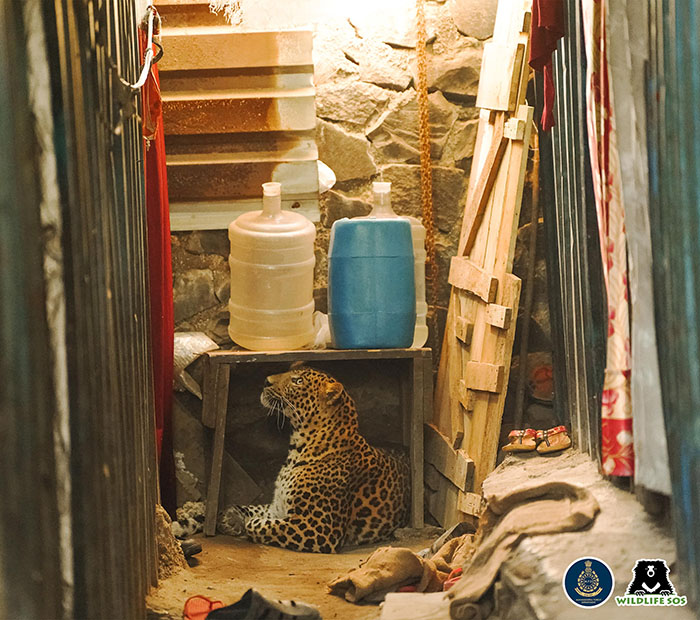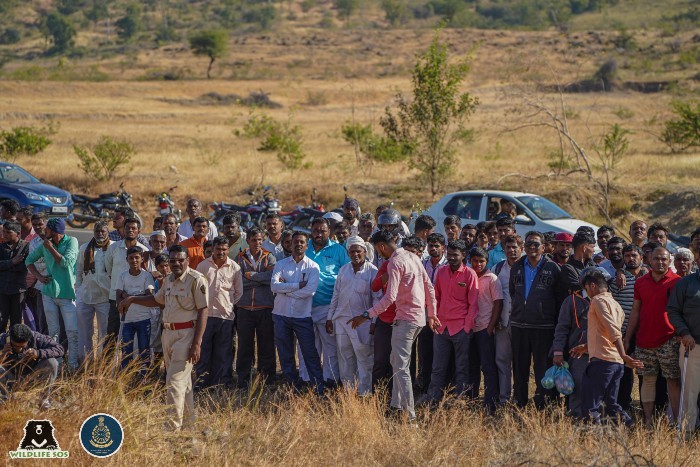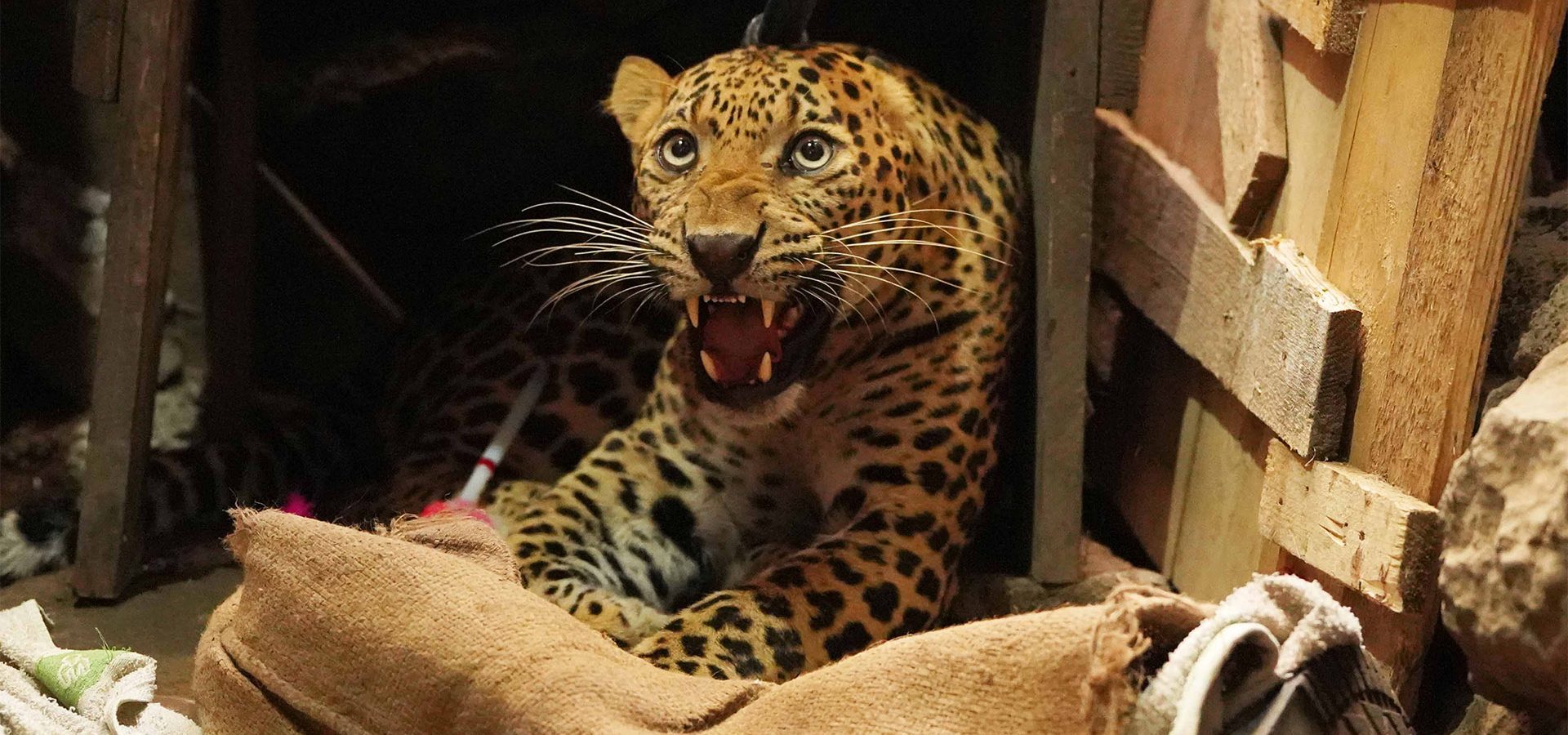2022 ended on a dramatic note with our team conducting multiple leopard rescues in Maharashtra in the month of December. The Wildlife SOS team operating out of the Manikdoh Leopard Rescue Centre (MLRC) was on its toes as the members covered a lot of ground in the state. The team ended up rescuing as many as five leopards in a single month across three different forest ranges, namely Otur, Newasa and Takli Dhokeshwar.
Successive Leopard Rescues
The month started explosively with two back-to-back rescues within a span of 24 hours. The first one was carried out in a late-night operation, where Wildlife SOS and the Maharashtra Forest Department rescued a female leopard from a 30-foot-deep well in Navalewadi village, in Otur Forest Range of Pune district.
It all started when one night, villagers could hear an unfamiliar sound coming from a nearby well. Approaching it cautiously, they discovered that a leopard had fallen into the well. The alert villagers noticed the animal struggling to stay afloat and seemingly exhausted, and they immediately called the Maharashtra Forest Department and the Wildlife SOS. It was a long one-hour drive, and the rescue members were anxious about the perilous condition of the animal.
Like every other well rescue operation, the team assessed the surroundings and the depth of the well as soon as it reached the location, and a trap cage was lowered accordingly. After a 30-minute effort, the leopard was safely extricated from the well. A health assessment by our wildlife veterinary officer revealed that the animal was an approximately 7-year-old female. It was a sign of relief to see that the leopard had not sustained any injuries, and therefore was declared fit and released back into the wild.

Shortly after, the team found itself travelling almost 180 km from the Manikdoh Leopard Rescue Centre in Junnar to the Newasa Forest Range in Ahmednagar district. This time, a male leopard, estimated to be between 6 and 8 years old, was spotted inside a livestock shed near Pachunda village. As the leopard had preyed on cattle there, the Wildlife SOS veterinarian had to be extremely cautious. The individual was finally tranquilised, shifted into a transport cage and handed over to the forest officials.
Leopard in a Slum
On an extremely rare occasion, residents of Chakan town in Pune district were sent into a frenzy when a different kind of visitor made himself at home inside a chawl (slum settlement). A leopard was found sitting in a narrow passage inside the chawl next to the Pune-Nashik highway.
As the Wildlife SOS team operating out of MLRC was called into action, they made preparations by equipping themselves with safety nets, a trap cage and protective gear to carry out the rescue mission. It was a 2-hour-long operation where the forest officers and traffic police implemented crowd control measures.

Due to the narrow space available in the passageway, the Wildlife SOS vet had to be extremely careful lest the leopard retaliated in defence. The leopard was spotted sitting below an abandoned wooden box and seemed to be stressed, and the vet approached to immobilise the leopard from a safe distance.
After a closer look, the vet confirmed that the leopard was a male, estimated to be 6 years old. It was also discovered that he was hit by a vehicle and hence was trying to find a spot to rest. Given that the Chakan area is densely populated, a leopard sighting can cause a massive hue and cry among the residents. When a leopard enters a dense human settlement such as this, the situation can take a drastic turn. So, to avoid any mishap, managing the crowd and assessing the surroundings are crucial steps before actually tranquilising the leopard. The animal was brought to MLRC for medical observation.
The Highway Leopards
More drama was added in the month with two more leopard rescues. The first one involved an adult male leopard – aged approximately 6-7 years old – near Dhotre village, which falls under the Takli Dhokeshwar Forest Range in Ahmednagar district. Inhabitants of the village were startled after spotting the animal taking a cat nap on the side of a highway.
As unique as the sight was, the leopard had been feeding on easily available prey in a patch of dry grassland. After being alerted by the villagers, both the forest department and the team from MLRC were on their way to rescue the leopard. Meanwhile, over 200 villagers had gathered as each of them tried to get a glimpse of the big cat. The teams arrived there and dispersed the crowd first, following which the Wildlife SOS veterinarian tranquilised the leopard from a safe distance. As the incident happened near a busy highway, the leopard had to be shifted away from the crowd to avoid any mishap. The animal was eventually handed over to the forest department.

In what was the last operation of the month as well as the year 2022, the MLRC team assisted the Maharashtra Forest Department in rescuing a leopard from Pimpalgaon Joga village, located in the Otur Forest Range of Pune district. A farmer met with a jaw-dropping moment when he saw an injured leopard resting inside his agricultural field next to the highway. After encountering the animal in proximity and fearing for his safety, the farmer wasted no time in apprising the forest department of Otur, who in turn informed the Wildlife SOS team at MLRC.
Upon arriving at the location, the teams discovered that the leopard was nestled quietly amidst the shrubs. The rescue members took the assistance of a JCB excavator machine so that they could climb on it to get a clear view. The leopard was finally tranquilised after a 4-hour-long tense operation. After securing the animal, he was identified as an approximately 6-year-old male. Further examination revealed the animal’s left forelimb to be fractured, possibly from a vehicular collision. The leopard is currently under medical observation at MLRC, and further treatment will be carried out depending on his progress.
Conflict Mitigation
Historically, the winter months are quite active for our team in terms of leopard rescue cases, and situations involving leopard sightings are higher during this time. One of the reasons for this is shorter days, resulting in an early sunset and late sunrise. These are parts of the day when leopards are quite active, and their movement coincides with human activities. This leads to an increased chance of human-leopard encounters and eventual conflict.
However, Wildlife SOS has worked relentlessly in this landscape of Maharashtra to increase awareness and sensitise people who are cohabiting in the domain of this large predator. Awareness about leopard behaviour and avoiding hours to venture into the forest when leopards are most active are two of the most important steps to avoid confrontation. In all the rescue cases, cooperation and alertness of the local communities as first responders were extremely crucial for the timely intervention. The forest department’s role in reaching the site first is another significant step to complete the operations.

Due to such intensive multi-stakeholder involvement, Wildlife SOS stands as a strong pillar of leopard conservation in Maharashtra. You can also play a role in our efforts. Become a monthly donor for Wildlife SOS and support our life-saving work.





